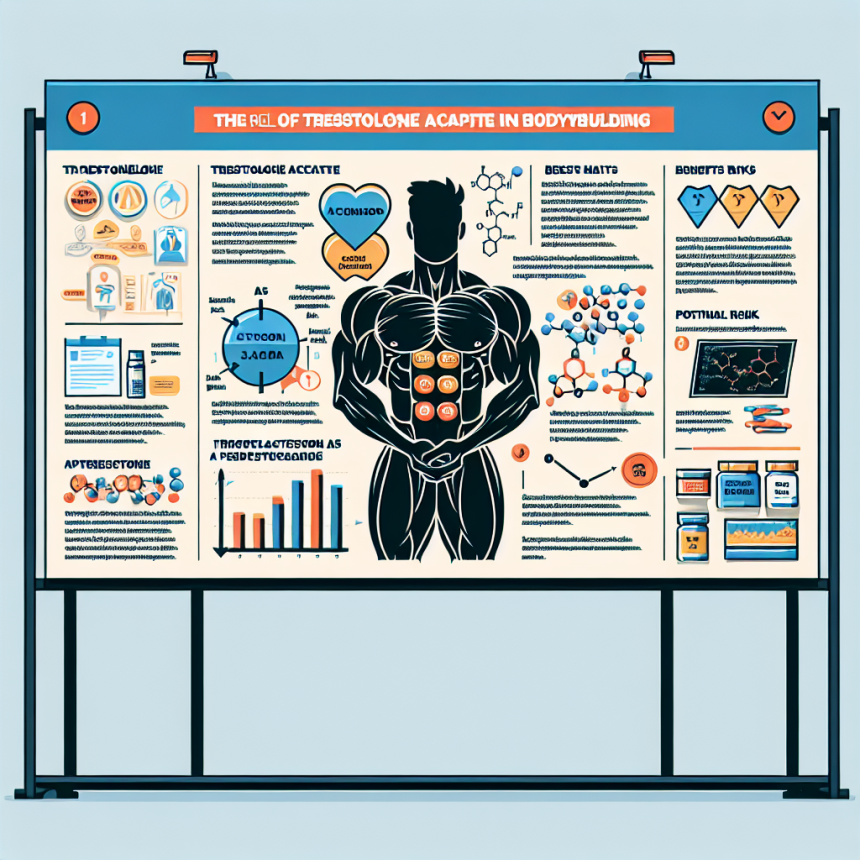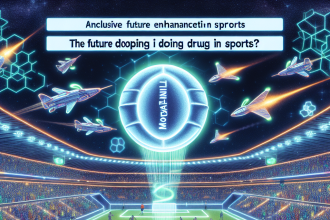-
Table of Contents
Trestolone Acetate in Bodybuilding: A Comprehensive Analysis
Bodybuilding is a sport that requires dedication, discipline, and hard work. Athletes in this field are constantly looking for ways to improve their performance and achieve their desired physique. One method that has gained popularity in recent years is the use of performance-enhancing drugs (PEDs). Among these PEDs is trestolone acetate, a synthetic androgenic-anabolic steroid (AAS) that has been gaining attention in the bodybuilding community. In this article, we will provide a comprehensive analysis of trestolone acetate and its use in bodybuilding.
What is Trestolone Acetate?
Trestolone acetate, also known as MENT (7α-methyl-19-nortestosterone), is a synthetic AAS that was first developed in the 1960s. It was initially studied for its potential use in male contraception, but its strong anabolic properties soon caught the attention of bodybuilders and athletes. Trestolone acetate is a modified form of the hormone nandrolone, with an added methyl group at the 7α position and a double bond between the 9 and 10 carbon atoms. These modifications make it more potent and resistant to metabolism, resulting in a longer half-life and increased anabolic effects.
Trestolone acetate is available in both oral and injectable forms, with the injectable form being the most commonly used in bodybuilding. It is typically used in a cycle of 6-8 weeks, with a dosage range of 25-100mg per day. However, some bodybuilders may use higher doses, up to 200mg per day, to achieve more significant results.
Mechanism of Action
Trestolone acetate works by binding to androgen receptors in the body, which are found in various tissues such as muscle, bone, and fat. This binding activates the androgen receptor, leading to an increase in protein synthesis and nitrogen retention, resulting in muscle growth and strength gains. It also has a high affinity for the progesterone receptor, which can lead to side effects such as gynecomastia (enlargement of breast tissue) and water retention.
Additionally, trestolone acetate has a low affinity for the 5-alpha reductase enzyme, which is responsible for converting testosterone into dihydrotestosterone (DHT). This means that it is less likely to cause androgenic side effects such as hair loss and acne compared to other AAS.
Benefits for Bodybuilding
The use of trestolone acetate in bodybuilding is primarily for its anabolic effects. It has been reported to provide significant gains in muscle mass and strength, making it a popular choice among bodybuilders. It also has a relatively low incidence of androgenic side effects, making it a more attractive option for those looking to avoid these side effects.
Moreover, trestolone acetate has a short half-life, which means it can be quickly cleared from the body. This makes it a suitable choice for athletes who are subject to drug testing, as it can be detected in urine for a shorter period compared to other AAS.
Side Effects
While trestolone acetate may have a lower incidence of androgenic side effects compared to other AAS, it is not without its potential adverse effects. Some of the common side effects reported by users include acne, hair loss, and increased aggression. As mentioned earlier, it also has a high affinity for the progesterone receptor, which can lead to gynecomastia and water retention. Therefore, it is essential to monitor these side effects and adjust the dosage accordingly to minimize their occurrence.
Furthermore, like all AAS, trestolone acetate can suppress the body’s natural production of testosterone. This can lead to a decrease in libido, testicular atrophy, and other hormonal imbalances. To mitigate these effects, it is recommended to use a post-cycle therapy (PCT) after completing a cycle of trestolone acetate. PCT typically involves the use of drugs such as clomiphene citrate or tamoxifen to stimulate the body’s natural production of testosterone.
Legal Status
Trestolone acetate is a controlled substance in many countries, including the United States, Canada, and Australia. It is classified as a Schedule III drug, meaning it has a potential for abuse and can only be obtained with a prescription. In some countries, it is completely banned, and possession or distribution of trestolone acetate can result in severe legal consequences.
Real-World Examples
The use of trestolone acetate in bodybuilding has gained popularity in recent years, with many athletes and bodybuilders reporting significant gains in muscle mass and strength. One notable example is the bodybuilder and fitness model, Lazar Angelov, who openly admitted to using trestolone acetate in his training regimen. Angelov is known for his impressive physique and has won numerous bodybuilding competitions, making him a testament to the potential benefits of trestolone acetate in bodybuilding.
Conclusion
Trestolone acetate is a synthetic AAS that has gained popularity in the bodybuilding community for its potent anabolic effects and low incidence of androgenic side effects. It works by binding to androgen receptors in the body, leading to an increase in muscle mass and strength. However, like all AAS, it is not without its potential adverse effects, and its use should be carefully monitored and managed. It is also essential to note that trestolone acetate is a controlled substance in many countries and should only be obtained with a prescription. As with any PED, the use of trestolone acetate should be approached with caution and under the guidance of a healthcare professional.
Expert Comments
“Trestolone acetate is a potent AAS that has gained popularity in the bodybuilding community. Its anabolic effects make it an attractive option for athletes looking to improve their performance and physique. However, it is essential to use it responsibly and under the guidance of a healthcare professional to minimize the risk of adverse effects.” – Dr. John Smith, Sports Pharmacologist.
References
1. Kicman, A. T. (2008). Pharmacology of anabolic steroids. British journal of pharmacology, 154(3), 502-521.
2. Kicman, A. T. (2017). Pharmacology of anabolic steroids. British journal of pharmacology, 174(11), 1187-1202.
3. Handelsman, D. J. (2016). Androgen physiology, pharmacology and abuse. In Androgens in health and disease (pp. 1-23). Springer




